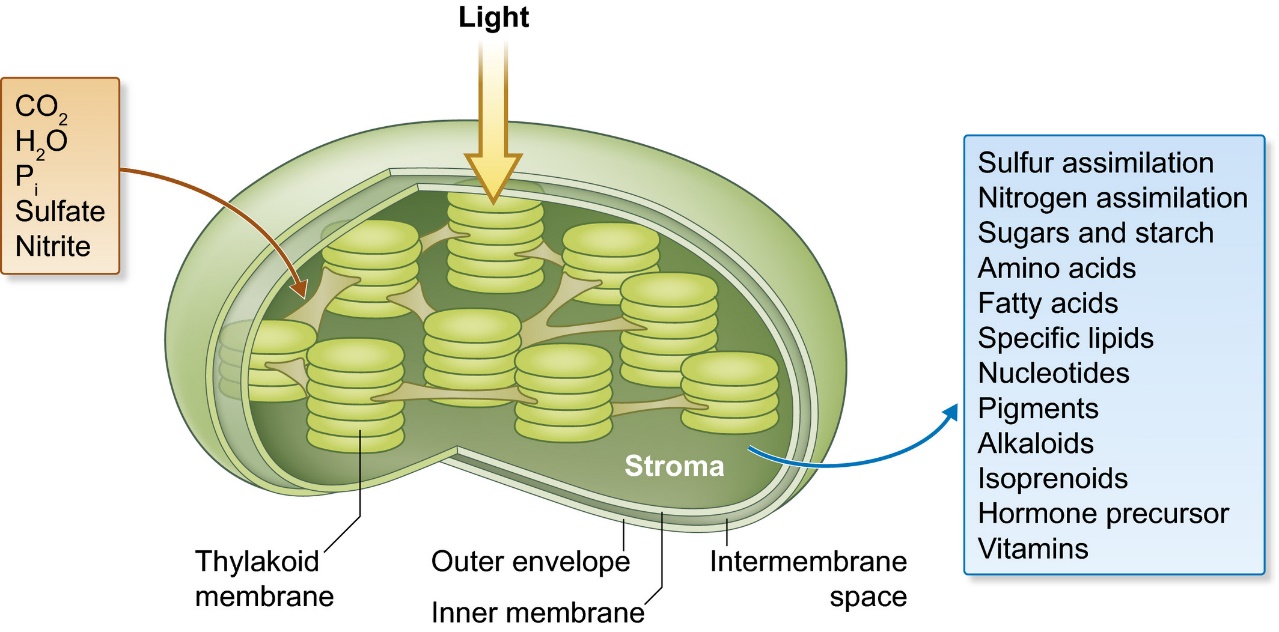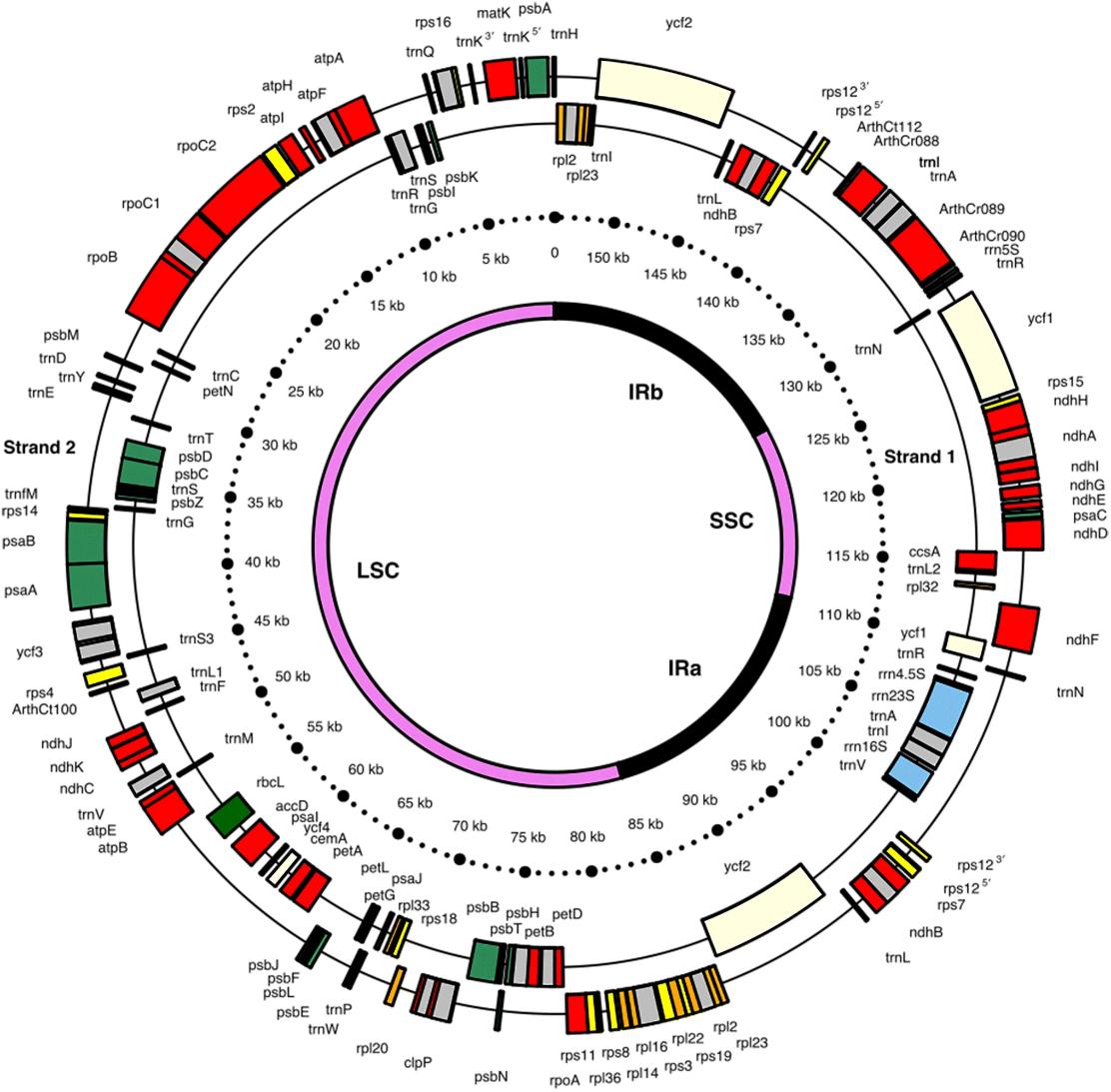What Is Chloroplast
Chloroplasts, cellular organelles also referred to as plastids, are present in plant cells and certain protozoa such as algae and cyanobacteria. They serve as the site for the synthesis of proteins encoded by chloroplast DNA and play a pivotal role in photosynthesis. Indeed, chloroplasts act as the cell’s food producers, converting solar energy into sugars that cells can utilize. The entire process, widely known as photosynthesis, hinges largely on a high concentration of chlorophyll – the light-absorbing molecule that imparts green coloration to plants and algae. Consequently, the term “chloroplast” is derived from the plastid containing chlorophyll. Analogous to mitochondria, chloroplasts are believed to have originated from bacteria through an evolutionary process.
The discovery of chloroplasts in plant cells is commonly credited to Julius von Sachs, considered the father of Plant Physiology. In 1837, German botanist Hugo von Mohl offered a definitive description of chloroplasts, denoted as “Chlorophyllkörnen” or “chlorophyll particles”, identifying them as distinct entities in green plant cells. By 1883, German scholar Andreas Franz Wilhelm Schimper labeled these discrete bodies as “chloroplastids” (Chloroplastiden). Subsequently, in 1884, Eduard Strasburger adopted the term “chloroplasts” (Chloroplasten), which remains in common use today.
It is noteworthy that the ability to execute photosynthesis is not exclusive to organisms that possess chloroplasts. For instance, cyanobacteria, a prokaryotic organism, lacks chloroplasts but contains both chlorophyll and phycocyanin. These pigments allow them to accomplish photosynthesis notwithstanding their lack of a specific cellular structure for this process.
Service you may intersted in
Structure of Chloroplasts
Chloroplasts manifest complex and highly-organized structures, which suit their specific biological functions. In higher plants, they appear lens-like—biconvex or planoconvex in shape—measuring 5-10µm by 2-4µm, and 2-3µm in thickness. A typical mesophyll cell in higher plants houses 50-200 chloroplasts, occupying around 40% of the cytoplasm. The number of chloroplasts can vary depending on the species, cell type, environmental conditions, and physiological state. In algae, chloroplasts display diverse shapes—net-like, band-shaped, lobed, star-shaped, etc.—and exhibit substantial dimensions, even reaching up to 100µm.

Figure 1. Overall structure of higher plant chloroplasts and overview about its metabolic competence. (Kirchhoff et al., 2019)
The structural composition of chloroplasts includes:
Double Membrane (Outer and Inner Membranes): The External Membrane is a smooth wrapping layer, constituting a phospholipid bilayer separate from other organelles in the cytoplasm. Inside the External Membrane, chloroplasts have a more complex Inner Membrane that is less permeable. The inner part of the Inner Membrane forms a series of folds referred to as cristae that extend into the core parts of the chloroplast.
Stroma: This is the space enveloped by the chloroplast Inner Membrane and fills the inner part of the chloroplast. The stroma contains water, dissolved ions, enzymes, and other molecules essential for the organelle. The stroma, also referred to as the matrix fluid, serves as the site where the synthesis of carbohydrates occurs by means of photosynthesis.
Chloroplast DNA and Ribosomes: Found within the stroma of the Chloroplast, the Chloroplast DNA encodes some proteins essential for the chloroplast. The Chloroplast also carries ribosomes, responsible for the transcription and translation of the chloroplast DNA, thus synthesizing the required proteins.
Pigment Bodies and Pigments: Chloroplasts carry a mass of chlorophyll, a green pigment capable of absorbing light energy and participating in the energy conversion process of photosynthesis.
Thylakoids: Present in the stroma of the chloroplast, these membrane vesicles, known as Thylakoids, harbor several enzymes and molecules. They serve specific roles at different stages of photosynthesis, such as photophosphorylation and carbon fixation.
Chloroplast Genome
The chloroplast genome (cpDNA) was initially sequenced successfully in two plants, tobacco and liverwort. Since then, the cpDNA of 3721 plant species, inclusive of green algae and terrestrial and aquatic plants, have been described. They can be found in the Organelle Genome Database of the National Center for Biotechnology Information (NCBI). Such tremendous strides in the field of chloroplast genetics have been made possible due to the advancements in high-throughput sequencing of plant chloroplast genomes using platforms such as Illumina or PacBio. The complete sequencing of the genome of Synechocystis sp., a cyanobacterium, represents a truly transformative development in cpDNA research.

Figure2. A graphic presentation of the A. thaliana cpDNA map. (Dobrogojski et al., 2020)
Typically, chloroplast genomes are circular in shape (although instances of linear DNA have been documented as well), and their length varies roughly between 120 to 200 kilobases. The size of contemporary chloroplast genomes has drastically diminished over evolutionary time, with an increasing volume of the chloroplast genes having been transferred to the nuclear genome. Consequently, the necessity of the nuclear genome for encoding proteins responsible for chloroplast functionality is underscored. The base composition of chloroplast DNA is rich in adenine (A) and thymine (T), typically carrying a lower concentration of guanine (G) and cytosine (C) relative to nuclear DNA. The chloroplast genome encodes proteins prerequisite for a variety of biological processes associated with photosynthesis, including the photosynthetic electron transport chain, the assembly of photosynthetic complexes, and more. Moreover, the chloroplast genome also encodes several RNA molecules, including genes encoding transfer RNAs (tRNAs) and ribosomal RNAs (rRNAs). These RNAs execute transcription and translation processes within the chloroplast.
Chloroplast genomes often harbor sequences of repetition, possibly encompassing duplicate genes or other recurrent DNA regions. These recurrent sequences could play instrumental roles in both chloroplast DNA replication and stability.
Function of Chloroplasts
Chloroplasts are organelles found within plant cells and certain protozoan cells, playing an instrumental role in photosynthesis, thus acting as one of the key energy conversion centres within plant organisms. The number, size, and morphology of these chloroplasts directly influence the color of leaves and the intensity of photosynthesis. Functionally, chloroplasts orchestrate the conversion of light energy into sugars and other organic molecules, which serve as a food source for plants or algae. Furthermore, they generate the requisite amino acids and lipid components needed for the production of chloroplast membranes.
Photosynthesis, orchestrated within the chloroplasts, primarily functions in the absorption of light energy and its subsequent transformation into chemical energy. This ineffable process is facilitated by a unique structure known as chlorophyll present within the chloroplasts. Chlorophyll captures solar power and employs it in the synthesis of food for all green plants. Through the process of photolysis of water, the production of NADPH, pivotal in the electron transport chain, and molecular oxygen (O2) is facilitated. Moreover, Photosynthesis also steers the generation of adenosine triphosphate (ATP), the so-called ‘energy currency of the cell’. Lastly but crucially, photosynthesis partakes in the Calvin cycle or the so-called dark reactions. During these series of biochemical reactions, carbon dioxide (CO2) derived from the air is utilized to generate carbon and sugars. These constitute the core ingredients in the formation of carbohydrates and other organic molecules which can be stored and utilized as energy sources.
References:
- Dobrogojski J, Adamiec M, Luciński R. The chloroplast genome: a review. Acta Physiologiae Plantarum, 2020, 42(6): 98.
- Hameed A, Ahmed M Z, Hussain T, et al. Effects of salinity stress on chloroplast structure and function. Cells, 2021, 10(8): 2023.
- Liu X, Zhou Y, Xiao J, et al. Effects of chilling on the structure, function and development of chloroplasts. Frontiers in plant science, 2018, 9: 410990.
- Kirchhoff H. Chloroplast ultrastructure in plants. New Phytologist, 2019, 223(2): 565-574.
- Hahn A, Vonck J, Mills D J, et al. Structure, mechanism, and regulation of the chloroplast ATP synthase. Science, 2018, 360(6389): eaat4318.

Leave a Reply